Investors' Concerns
For businesses, the most fundamental purpose - if not the only purpose - is profit. No business invests in a country or a field where they do not see an opportunity to make a profit. The higher the profit, the more attractive it is to investors and contractors. However, any investment environment contains risks. Risks come from many different aspects and are always unpredictable. In particular, legal risks are considered to be of great concern to investors.
Prof. Dr. Le Hong Hanh, Chairman of the Vietnam International Arbitration Center (VIAC), Editor-in-Chief of Law and Development Magazine (L&D), Senior Lecturer at Hanoi Law University, shared that legal risks include internal risks and external risks. The distinction between internal legal risks and external legal risks is only relative because it is easy to convert internal risks into external risks and vice versa.
Among the internal legal risks are the risks of abuse of power, exceeding authority, embezzlement by company leaders and especially labor relations. Dismissing employees, violating social security regimes of employees often give rise to internal legal risks of the enterprise. These risks can also easily be transformed into external risks.
External legal risks are more worrisome for businesses. In practice at the Vietnam International Arbitration Center, Professor Hanh affirmed the fact that many businesses suffer huge losses, cannot recover, leading to bankruptcy or insolvency.
Professor Hanh said that investors and contractors directly bear many risks, especially legal risks originating from the investment regime. This is especially important in the context of Vietnam where laws change rapidly for many different reasons. Legal risks are hindering the realization of the principle of “harmonized benefits and shared risks” and thereby reducing the country’s attractiveness and competitiveness for domestic and foreign investment sources.
Limiting risks and harmonizing benefits means expecting a breakthrough
Some experts have pointed out that the main cause of legal risks arises from ignorance, incorrect implementation or failure to implement legal regulations in business activities. Unlike the risk of violating internal/professional regulations at the enterprise, the violator is only responsible to the head of the enterprise and to the enterprise. Legal risks make the person involved face responsibilities before the law, before the State, and may even be sentenced to prison.
According to Professor Hanh, risks come from many aspects of the investment institution. The coverage of economic and social relations arising from investment activities, especially in the context of new economic models such as green economy, knowledge economy, digital economy being operated, linked not only to economic and trade issues but also to social security and environmental issues, the risks become more diverse. The country's current institution is being urgently perfected with a prominent strategic orientation in the current context of promoting the private economy to break through and develop, so limiting risks for investors and contractors, harmonizing their interests means the expectation of breakthroughs.
Professor Hanh emphasized that legal risks are complex and extremely unpredictable. It is very difficult for businesses to predict and control them from the beginning. In the context of global commercialization, businesses, investors, and contractors cannot avoid participating in transactions and signing contracts. Therefore, identifying and effectively preventing legal risks that may arise in investment is of particular importance to the sustainable development of businesses and investors.
* Associate Professor, Dr. Tran Viet Dung, Vice Principal of Ho Chi Minh City University of Law: Ensuring the implementation of the principle of "harmonized benefits and shared risks" for foreign investment
Assoc.Prof.Dr. Tran Viet Dung, Vice Rector of Ho Chi Minh City University of Law.
Among the trade and investment agreements that Vietnam has recently signed, the Vietnam-EU Free Trade Agreement (EVFTA) and the Vietnam-EU Investment Protection Agreement (EVIPA) show that these Agreements pay special attention to rebalancing the asymmetric relationship between the rights of the host country and the rights of investors in traditional international investment agreements (IIAs). These provisions help the signatories, on the one hand, encourage international investment, and on the other hand, ensure that attracting this investment does not unduly restrict the right to issue management measures associated with national sovereignty.
It should also be noted that EVIPA is only one of more than 80 IIAs and FTAs of Vietnam, the provisions of EVIPA are only effective for investment activities between Vietnam and the EU. However, through the experience with EVFTA - EVIPA, Vietnam can also build a similar approach in negotiating other IIAs, especially paying attention to negotiating bilateral investment protection agreements (BITs) that have expired or for IIAs that will be negotiated in the future. Vietnam needs to be more active and proactive in cooperating with its partners to ensure that future IIAs pay special attention to the State's regulatory rights. These are important bases for institutionalizing the Government's policy of "harmonized benefits, shared risks" at the international legal level.
* Dr. Chu Thi Hoa, Deputy Director of the Institute of Strategy and Legal Science, Ministry of Justice: Building a sandbox from the perspective of the principle of "harmonized benefits and shared risks"
Dr. Chu Thi Hoa, Deputy Director of the Institute of Strategy and Legal Science, Ministry of Justice.
In principle, building a controlled testing legal framework (sandbox), first, it is necessary to ensure a balance between promoting innovation, facilitating business activities and state management responsibilities in protecting social interests and controlling risks. The testing mechanism needs to support businesses in developing new products and services without causing systemic risks or negatively affecting the socio-economic order. Management agencies need to develop specific assessment criteria to control negative impacts on consumers and the market.
Second, testing must be conducted based on clear and public criteria regarding the scope, time, and conditions of testing. Participating enterprises are responsible for fully reporting the test results, arising risks, and remedial measures to protect the interests of consumers and related parties.
Third, the pilot framework should be adaptable based on practical results, allowing regulations to be adjusted according to changes in technology and business models. There should be a mechanism for periodic assessment to ensure the effectiveness of the pilot framework and its ability to be converted into formal legal regulations when appropriate...
* Lawyer Tran Tuan Phong, Founding Lawyer of Vietnam International Law Firm VILAF: Promoting increased investment from the domestic private sector
Lawyer Tran Tuan Phong, Founding Lawyer of Vietnam International Law Firm VILAF.
In addition to reforming specific SOEs, Vietnam must streamline its broader regulatory environment, which has often stifled business activity and slowed project progress, both for domestic and foreign direct investment (FDI) firms. General Secretary To Lam’s commitment to streamlining the bureaucracy has resulted in a significant reduction in the number of ministries, departments, agencies and other government agencies, but this must be matched by similar efforts to cut regulations, particularly in construction permits, equipment procurement and to promote increased investment from the domestic private sector.
Or on science, technology and innovation: While the role of technology has been acknowledged, this pillar emphasizes the creation of a national innovation ecosystem that goes beyond the benefits driven by FDI as targeted by Politburo Resolution 57. Institutional reforms must focus on tax incentives, intellectual property rights enforcement and university-industry collaboration to nurture startups and scale local technology companies. Innovation needs to be equitably oriented in the case of Vietnam. This means that the State can step back to allow the private sector to take on greater responsibility for driving technological change... U.San
T. Hoang
Source: https://baophapluat.vn/phong-ngua-rui-ro-phap-ly-co-tam-quan-trong-dac-biet-doi-voi-su-phat-trien-ben-vung-cua-doanh-nghiep-nha-dau-tu-post544405.html


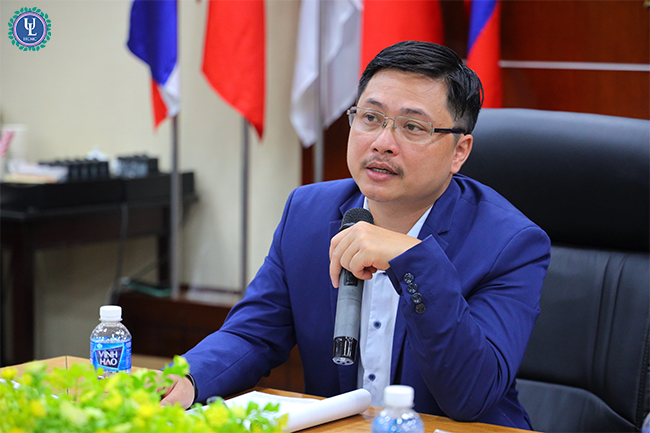

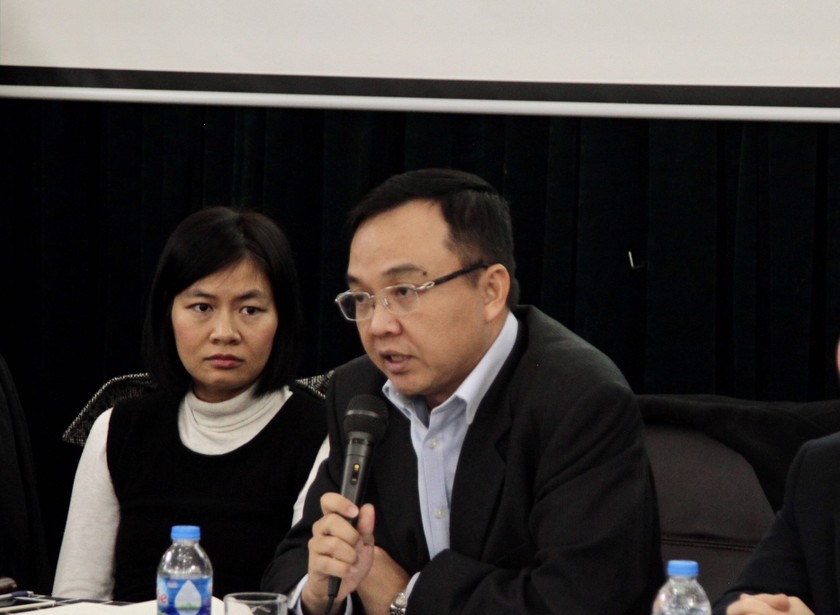
![[Photo] General Secretary To Lam arrives in Minsk, begins state visit to Belarus](https://vphoto.vietnam.vn/thumb/1200x675/vietnam/resource/IMAGE/2025/5/11/76602f587468437f8b5b7104495f444d)
![[Photo] General Secretary To Lam meets and expresses gratitude to Vietnam's Belarusian friends](https://vphoto.vietnam.vn/thumb/1200x675/vietnam/resource/IMAGE/2025/5/11/c515ee2054c54a87aa8a7cb520f2fa6e)

![[Photo] General Secretary To Lam concludes visit to Russia, departs for Belarus](https://vphoto.vietnam.vn/thumb/1200x675/vietnam/resource/IMAGE/2025/5/11/0acf1081a95e4b1d9886c67fdafd95ed)






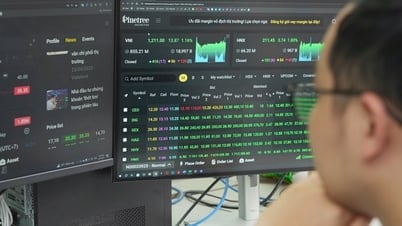











![[Photo] National Assembly Chairman Tran Thanh Man attends the Party Congress of the Committee for Culture and Social Affairs](https://vphoto.vietnam.vn/thumb/1200x675/vietnam/resource/IMAGE/2025/5/11/f5ed02beb9404bca998a08b34ef255a6)






























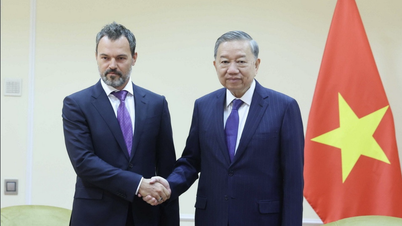

















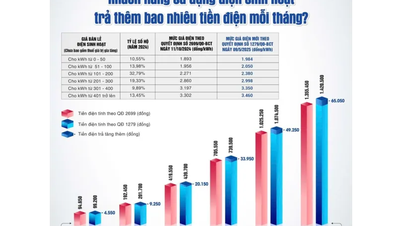
















Comment (0)